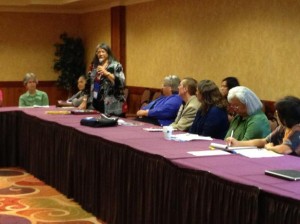Recovering economy, tax code changes boosting numbers
By BRAD SHANNON, The Olympian
Washington’s top economic forecaster, Steve Lerch, says the slow-recovering economy and tax changes approved by the Legislature are expected to generate $368 million more revenue for state operations than he last predicted the state would collect by mid-2015.
The better financial outlook includes $123 million that is largely the result of tax code changes approved by lawmakers.
The overall gain to the state’s accounts means that most state workers are more likely to qualify for a 1 percent cost-of-living pay adjustment in July 2014. Most contracts for general government workers had a conditional 1 percent raise built in that would be triggered by how much next February’s forecast attributes higher general-fund revenues to increased economic activity.
“If we get any kind of positive in November (when the next forecast is scheduled), it’s likely that salary increase will be part of our budget. It’s a mathematical calculation,” state budget director David Schumacher said after Lerch announced the revenue forecast Wednesday during a meeting of the Economic and Revenue Forecast Council. “We’re very close.”
Said Tim Welch, spokesman for the Washington Federation of State Employees, which represents roughly 40,000 state and college employees: “It’s headed in the right direction, but we’ll have to wait and see until February 2014.”
Lawmakers who serve on the Economic and Revenue Forecast Council said the new revenue is good news but not enough to alter the way they must approach their 2013-15 supplemental budget plan during the next legislative session starting in January. The Legislature is under court order to improve funding for K-12 schools, and lawmakers still do not know if this year’s increased investment of almost $1 billion is enough to satisfy the state Supreme Court.
“My take is it’s a relatively small move, and it helps us have an ending fund balance that’s larger than 47 cents,” said House Appropriations chairman Ross Hunter, D-Medina. “I don’t think this creates a big opportunity to spend, or changes anything we were doing.”
Said Senate Ways and Means chairman Andy Hill, R-Redmond: “I think you just bank that money.”
In fact, the new money gives the state about $862.7 million in total general-fund reserves for the current budget.
Hunter did warn there is a litigation risk — involving two lawsuits going before the state Supreme Court next month — on state employee pensions. In a worst case, these could cost $1.3 billion, according to the state actuary.
In his forecast, Lerch said the economy is continuing to slowly improve since the Great Recession began more than five years ago. But he told the forecast council that the way forward has many risks.
He noted that job growth had been slower nationally in August and said forecasters in his office are “more than a little concerned about what is going on in the other Washington” — particularly with congressional votes yet to occur on a federal budget or to increase the federal government’s debt ceiling.
“Should either one of those things not happen, we know that will have a big impact on consumer confidence and on the economy,” Lerch said. “So that’s certainly a risk we’re watching. We’ve become a bit more concerned about housing affordability, and Europe is … still very weak.”
Lerch’s forecast included a prediction that revenues in the 2015-17 budget period also would be up by a total of $342 million. But he said $249 million of that was due to legislative action and the smaller share because of economic improvement.
Before adjourning their second special session June 29, lawmakers authorized about a dozen changes in tax law, including changes to a telephone tax and to the estate tax laws after state Supreme Court rulings opened unintended loopholes in those tax codes.
Read more here: http://www.theolympian.com/2013/09/19/2730646/revenue-forecast-for-state-increases.html#storylink=cpy






























